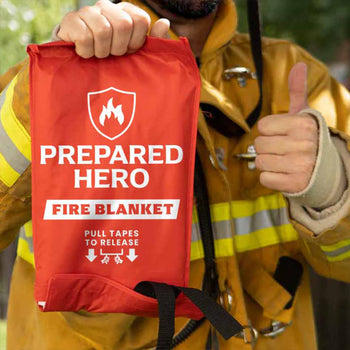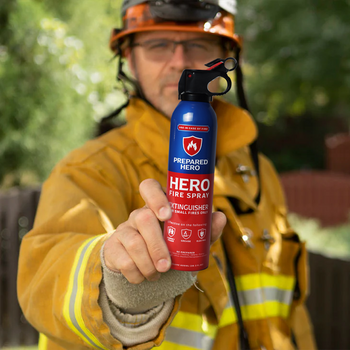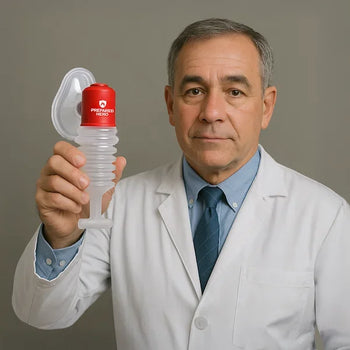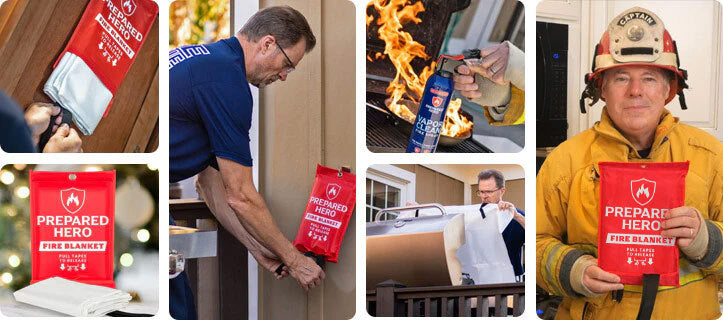Where you put your smoke detectors matters just as much as installing them. Proper placement makes sure they can detect...
Gasoline doesn’t stay good forever, but a lot of people forget that. If it’s been sitting for a while, there’s a good chance it’s gone bad, and using it can damage your engine. Whether you’re storing fuel for emergencies or just haven’t driven much lately, it’s smart to know how long gasoline lasts, what signs to look for, and how to store it safely.
Does Gasoline Go Bad?

Yes, gasoline goes bad, and it happens more often than you think. Over time, gas breaks down and its chemical composition changes. This means your engine won’t burn it the way it should. If your “check engine” light comes on for no clear reason, your car struggles to start, or your engine runs rough, old gasoline might be the problem.
Gas that’s gone bad often smells sour and looks dark or cloudy. In some cases, it can leave behind a sticky residue that clogs fuel lines or damages engine parts. Ethanol-blended gas (like E10 or E85) breaks down faster, especially if it’s exposed to air or heat. Even in sealed containers, gas usually lasts three to six months unless you use a fuel stabilizer.
Storing gasoline properly helps. Use airtight containers, keep them full to reduce air exposure, and store them in a cool, dry spot. Add a stabilizer if you're keeping fuel for a while, since it can stretch its lifespan.
If your gas has gone bad, don’t run it through your engine. Drain and replace it before it causes damage. Remember, it’s better to be safe than sorry when it comes to fuel.
How Long Does Gasoline Last?
Gasoline doesn’t last forever, especially if it has ethanol in it. Most of the gas sold at stations starts to go bad after about three months. That’s because ethanol pulls in moisture, which speeds up the breakdown process.
Pure gas can hang on a little longer, maybe up to six months. But even then, it starts to break down from exposure to oxygen. Once it goes bad, it can mess with your engine, cause it to run rough, and leave sticky gunk behind.
If you store gas right, like putting it in a sealed container, keeping it cool and out of the sun, you might stretch its life. Add a fuel stabilizer and it’ll last longer. Just don’t use what’s sitting at the bottom of a container, since that’s where water tends to collect.
Old gas smells off, looks darker, and can make your engine sputter or knock. If it’s been sitting too long, it’s better to get rid of it safely. Don’t pour it down the drain. Contact your local waste service for proper disposal.
How to Keep Gasoline Fresh

There are many ways to keep your gasoline fresh. The first is to drive your vehicle regularly. Driving a short distance a few times a week helps keep the fuel from getting stagnant. It will also force you to fill up with fresh fuel every month or two.
Another tactic to keep fuel from degrading over time is to top off your tank when you fill it. This will leave less room in the tank for moisture, which can cause water contamination and corrosion. Plus, a full tank limits the amount of oxygen in the tank, which the gasoline is prone to evaporate into.
Lastly, excess gasoline should be kept in an airtight container within a cool, low-humidity, low-oxygen environment.
How to Identify Old Gasoline

Not sure if the gas in your car or can is still good? Old gasoline can mess with your engine and be a pain to deal with. The good news is, there are a few easy ways to spot bad fuel before it causes problems. Here’s what to look for:
1. It Smells Off
Fresh gasoline has a strong but familiar scent. Old gas smells sour or strange. You don’t need to sniff up close because you’ll notice the smell as soon as you open the container or gas cap. If it doesn’t smell like regular gas, it’s most likely gone bad.
2. The Color Looks Wrong
Fresh gas is usually clear with a yellow tint. Old gas turns darker, sometimes brown or muddy. If it's in a can, pour a bit into a clear container to check. Don’t siphon it with your mouth. Use a proper pump and container instead.
3. There’s Debris in the Filter
Old gasoline breaks down and leaves behind sticky deposits. These can clog your fuel filter. If your filter looks dirty or gummed up, bad gas might be the reason.
4. Your Car’s Acting Up
Trouble starting, rough idling, or poor acceleration could mean old gas. You might also see the check engine light pop on. These signs usually show up after the fuel has sat there for months.
5. It’s Been Sitting for Too Long
Gas can go bad in as fast as three months. If your car or gas can hasn’t been used in that time, it’s best to assume the fuel is no good.
How to Store Gasoline Properly

Storing gasoline the wrong way is risky. Fires, fumes, and leaks are no joke. If you need to store some gas, here’s how to do it safely:
1. Use the Right Container
Only store gas in approved fuel containers: plastic or metal. Stick to smaller ones, like one to five gallons. You should also leave a little space at the top so the gas can expand. Then, make sure the container is in good shape and sealed tightly.
2. Pick the Right Spot
Store gasoline in a cool, dry place, away from heat and sparks. A detached garage or shed is the best option. Don’t keep it in your house. If you’re using an attached garage, be extra careful and avoid placing it near heaters, water heaters, or sunlight.
3. Watch Out for Fumes
Gas fumes are heavier than air and can spread along the ground. They don’t need a flame to ignite because heat alone can do it. Keep kids and pets away from stored gas, and don’t smoke nearby. It’s also a smart move to keep a fire blanket and fire spray nearby in case something goes wrong. They’re quick, easy tools to stop small fires before they get worse.
4. Consider Using Fuel Stabilizer
Use a fuel stabilizer if you’re storing gas long-term. Then, rotate your supply once a year. If you spill any gas, clean it up right away. Always wash your hands if it gets on your skin.
Is Three-Year-Old Gasoline Still Good?

No, three-year-old gasoline is not good. Gas that’s been sitting for three years is usually no longer safe to use in your car. Even if you added fuel stabilizer, it likely broke down by now. Old gas can leave sticky residue, clog fuel lines, and damage your engine. It also loses its ability to burn properly, which can lead to rough idling, stalling, or poor acceleration. Worst case, it could cause damage to your engine parts. If you find old gas, don’t just dump it anywhere. Dispose of it safely.
Can I Put One-Year-Old Gas in My Car?
It’s best not to put one-year-old gas in your car. Gas starts degrading right away, but most stays fine for about three months. After three months, you might notice small drops in performance. Once it hits the one-year mark, problems like engine knocking, sputtering, or clogged injectors occur. If the fuel’s been sealed, stored well, and mixed with fuel stabilizer, your car might still run, but not smoothly. When in doubt, fresh fuel is always the safer choice.
Is Gasoline Still Good After Two Years?

No, gasoline is not good after two years. Gas that's been sitting around for two years isn’t safe to use in your car. Over time, gas breaks down, especially if it is not stored properly. The lighter parts of it evaporate, which messes with how well it burns. On top of that, it can turn into a sticky mess, leaving varnish and gum that clog fuel lines and injectors. It can even cause corrosion inside the fuel system. If you’re stuck with two-year-old gas, don’t put it in anything you care about and dispose of it the right way.
Conclusion
Gasoline has a shelf life, and once it goes bad, it can damage your engine and create safety risks. That’s why proper storage is key. Use sealed containers, store them in cool places, and add stabilizer if needed.
Don’t forget about fire safety as well. Gasoline fumes are flammable and dangerous. To lower your risk of a gasoline fire, keep fire prevention tools nearby. They’re easy to use and stop a fire fast.
Do you want reliable, easy-to-use, and affordable tools to put out small fires before they spread? Check out Prepared Hero’s fire prevention tools here, and get up to 51% off on certain items. Stay prepared, hero!


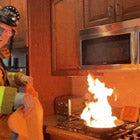 Fire
Fire Safety
Safety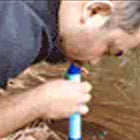 Survival
Survival Protection
Protection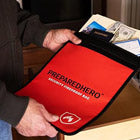 New
New
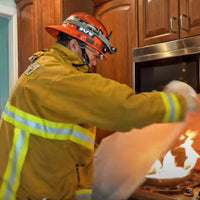 Fire
Fire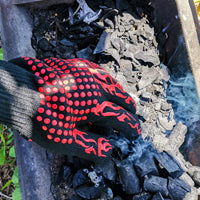 Safety
Safety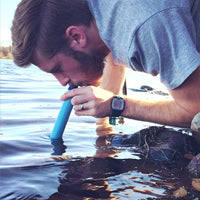 Survival
Survival Protection
Protection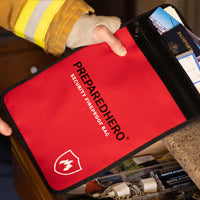 New
New
